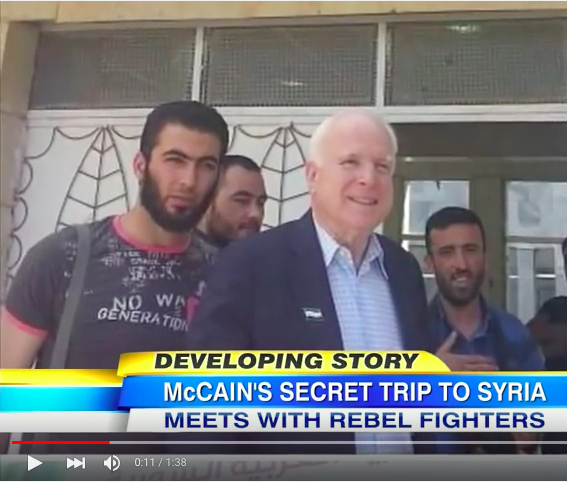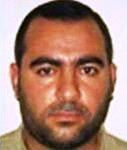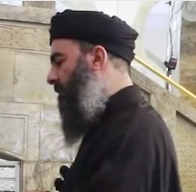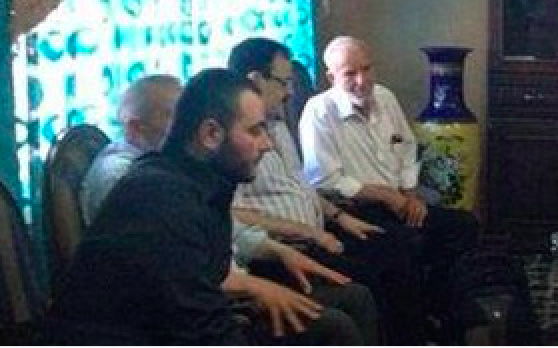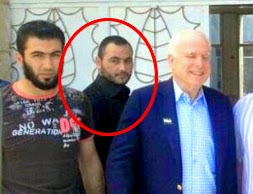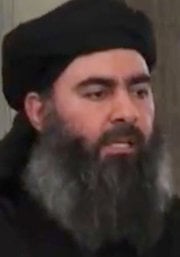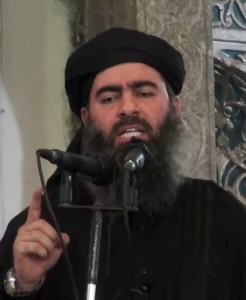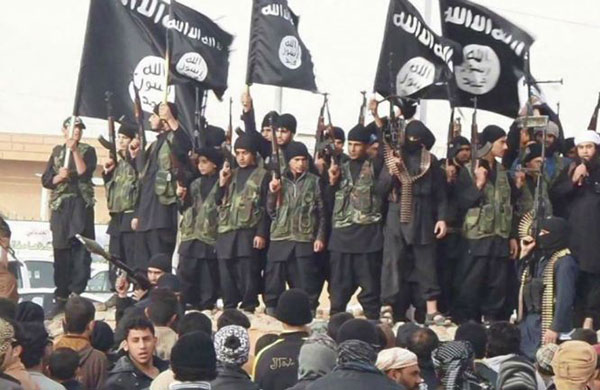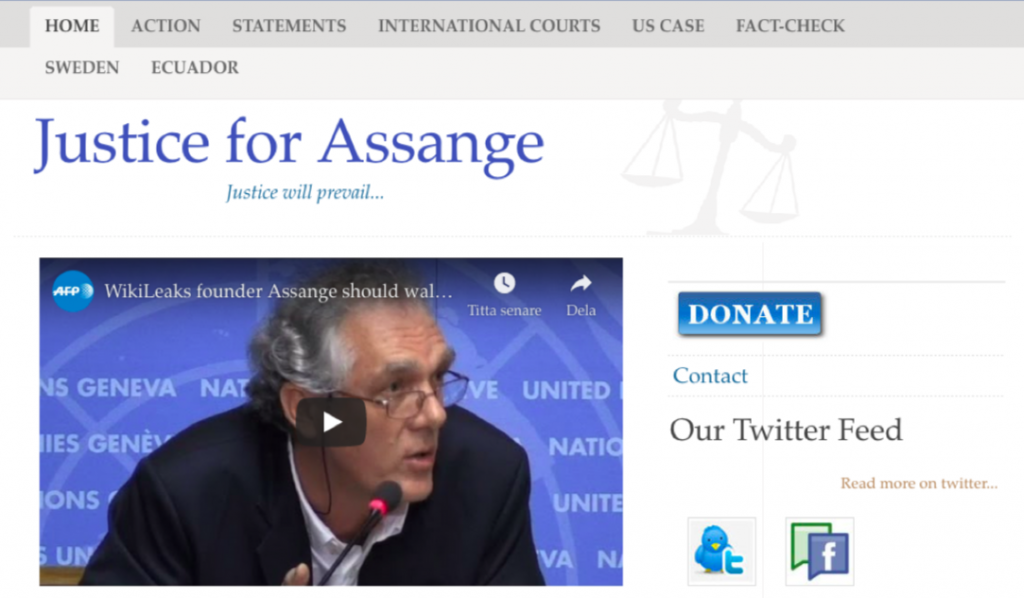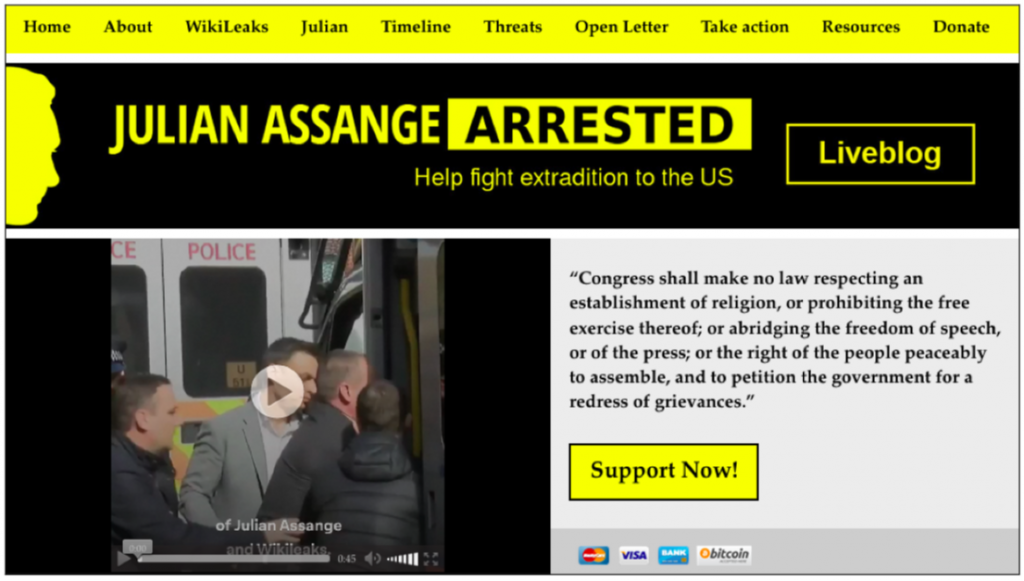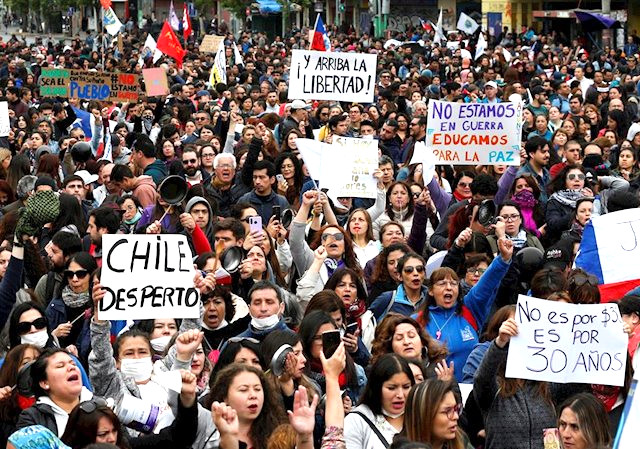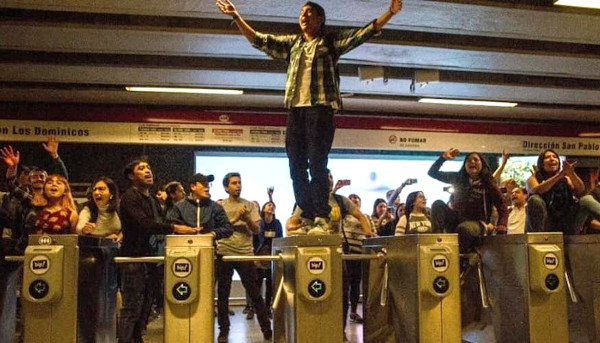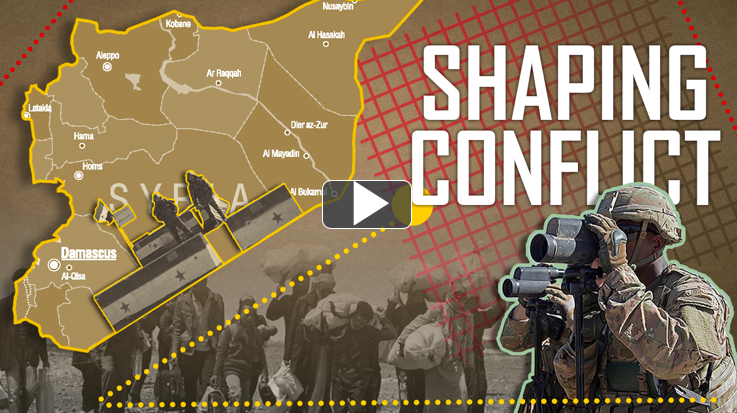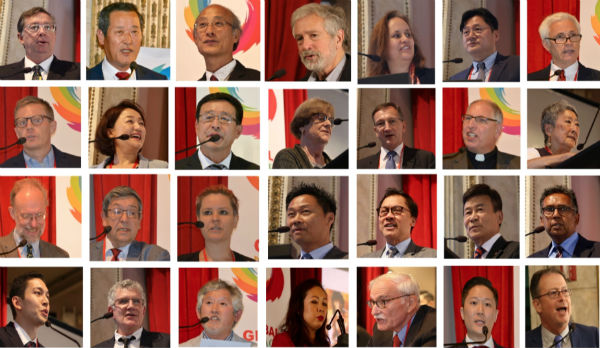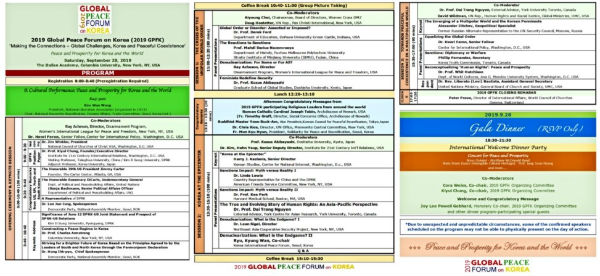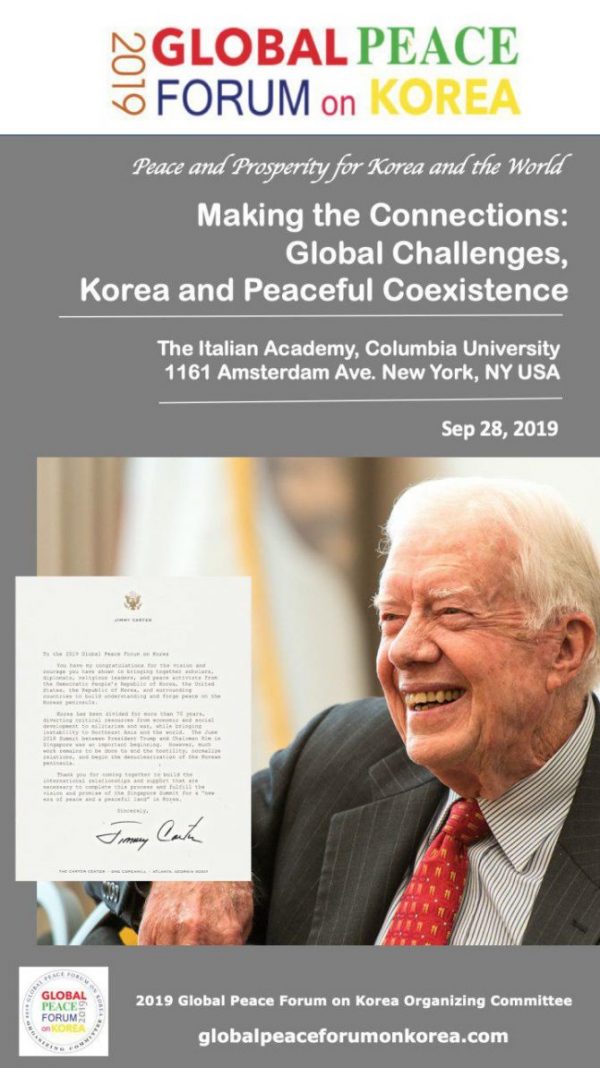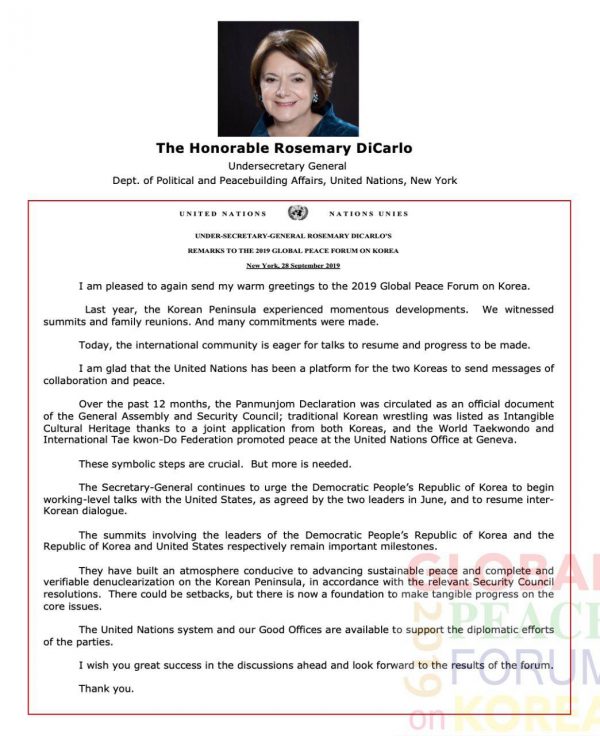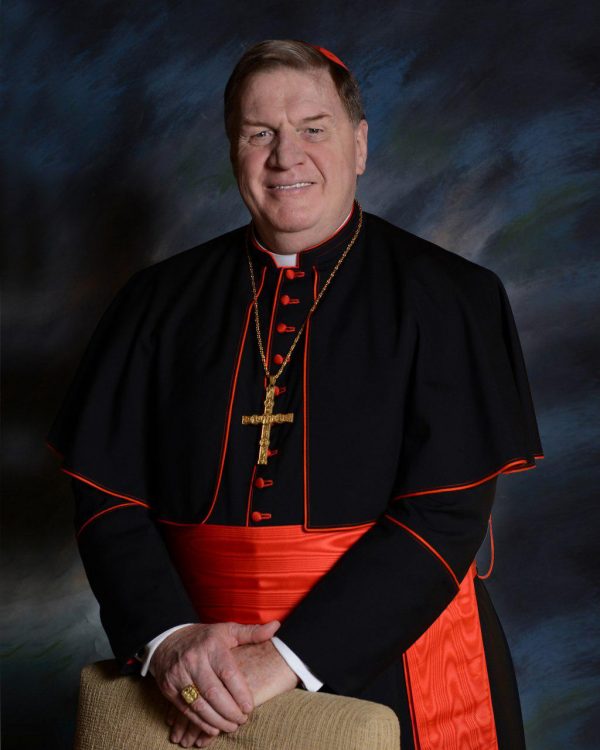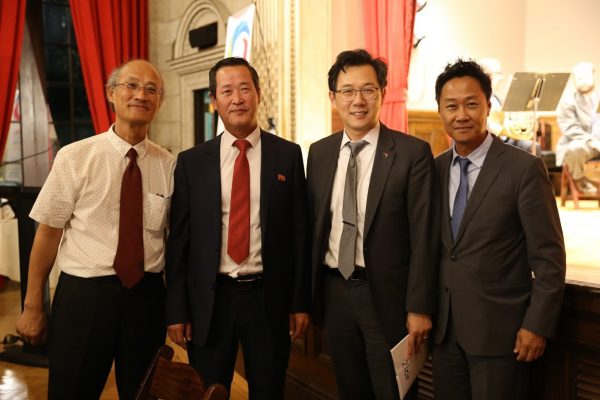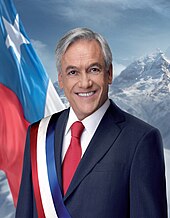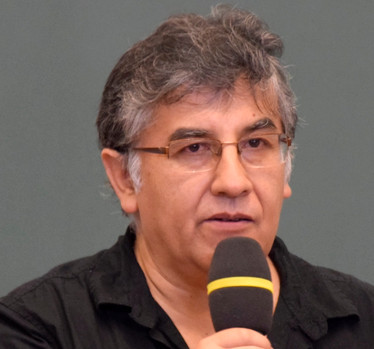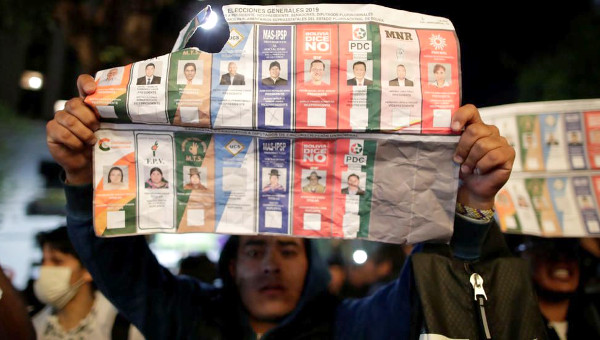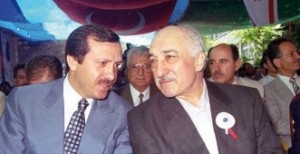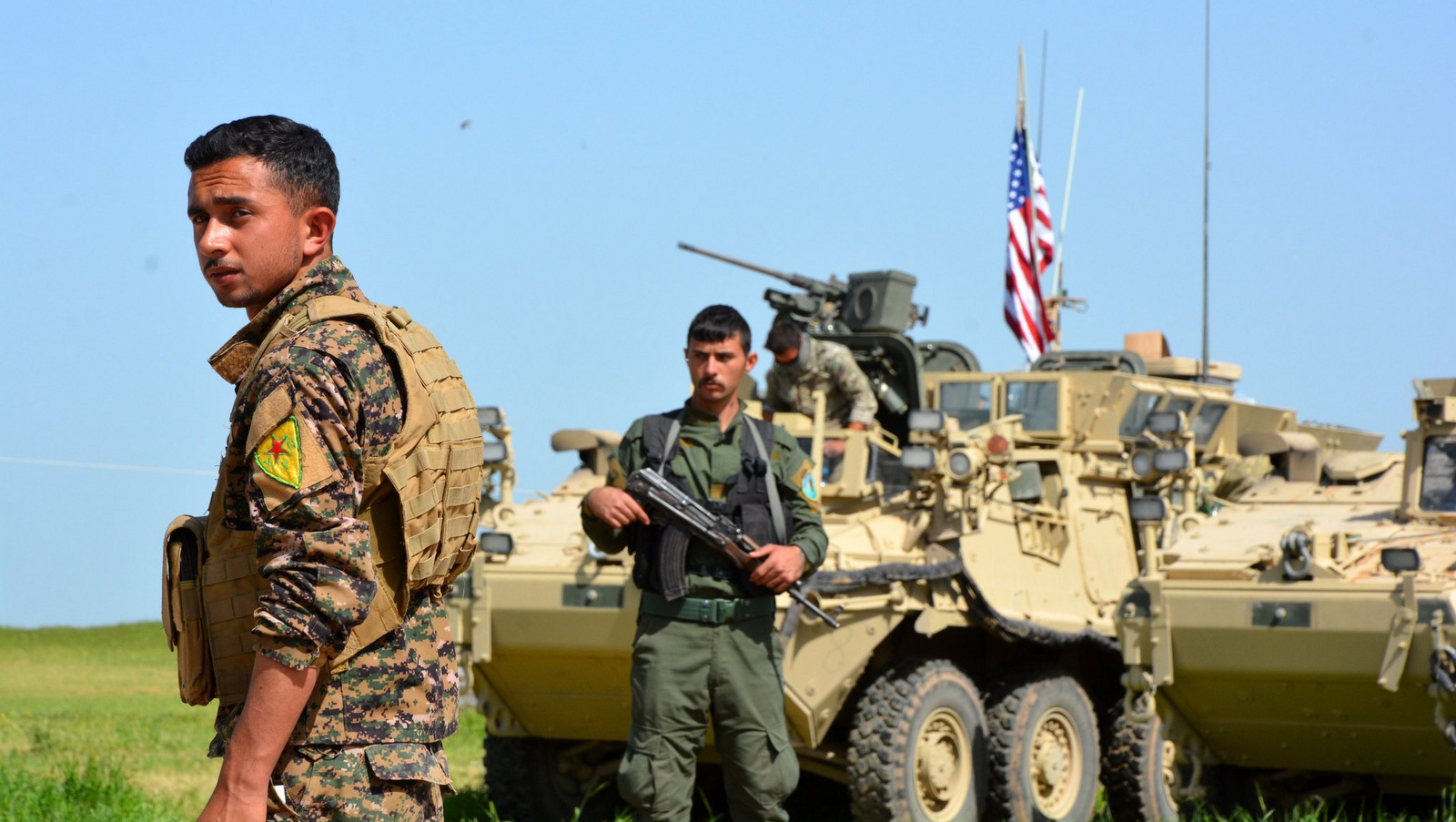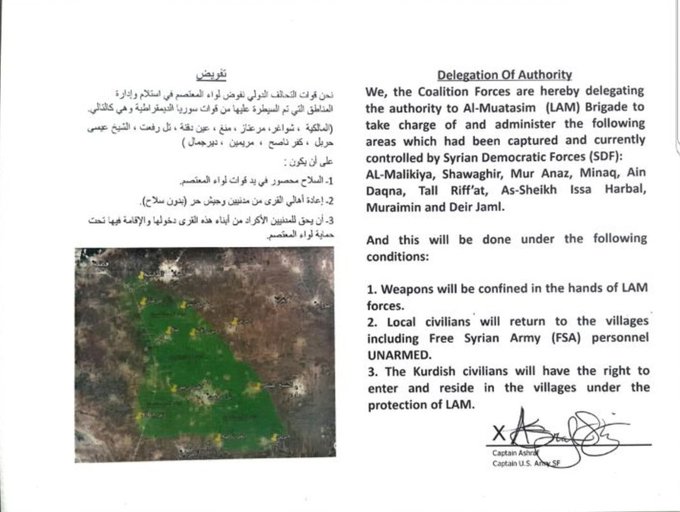The following is a preview of a chapter by Prof. Claudia von Werlhof in “The Global Economic Crisis: The Great Depression of the XXI Century.” (2009).
To read more, order the book online. Help us spread the word: “like” the book on Facebook and share with your friends!
***
Is there an alternative to plundering the earth?
Is there an alternative to making war?
Is there an alternative to destroying the planet?
No one asks these questions because they seem absurd. Yet, no one can escape them either. Until the onslaught of the global economic crisis, the motto of so-called “neoliberalism” was TINA: “There Is No Alternative!”
No alternative to “neoliberal globalization”?
No alternative to the unfettered “free market” economy?
What Is “Neoliberal Globalization”?
Let us first clarify what globalization and neoliberalism are, where they come from, who they are directed by, what they claim, what they do, why their effects are so fatal, why they will fail and why people nonetheless cling to them. Then, let us look at the responses of those who are not – or will not – be able to live with the consequences they cause.
This is where the difficulties begin. For a good twenty years now we have been told that there is no alternative to neoliberal globalization, and that, in fact, no such alternative is needed either. Over and over again, we have been confronted with the TINA-concept: “There Is No Alternative!” The “iron lady”, Margaret Thatcher, was one of those who reiterated this belief without end.
The TINA-concept prohibits all thought. It follows the rationale that there is no point in analyzing and discussing neoliberalism and so-called globalization because they are inevitable. Whether we condone what is happening or not does not matter, it is happening anyway. There is no point in trying to understand. Hence: Go with it! Kill or be killed!
Some go as far as suggesting that globalization – meaning, an economic system which developed under specific social and historical conditions – is nothing less but a law of nature. In turn, “human nature” is supposedly reflected by the character of the system’s economic subjects: egotistical, ruthless, greedy and cold. This, we are told, works towards everyone’s benefit.
The question remains: why has Adam Smith’s “invisible hand” become a “visible fist”? While a tiny minority reaps enormous benefits from today’s neoliberalism (none of which will remain, of course), the vast majority of the earth’s population suffers hardship to the extent that their very survival is at stake. The damage done seems irreversible.
All over the world media outlets – especially television stations – avoid addressing the problem. A common excuse is that it cannot be explained.[1] The true reason is, of course, the media’s corporate control.
What Is Neoliberalism?
Neoliberalism as an economic policy agenda which began in Chile in 1973. Its inauguration consisted of a U.S.-organized coup against a democratically elected socialist president and the installment of a bloody military dictatorship notorious for systematic torture. This was the only way to turn the neoliberal model of the so-called “Chicago Boys” under the leadership of Milton Friedman – a student of Friedrich von Hayek – into reality.
The predecessor of the neoliberal model is the economic liberalism of the 18th and 19th centuries and its notion of “free trade”. Goethe’s assessment at the time was: “Free trade, piracy, war – an inseparable three!”[2]
At the center of both old and new economic liberalism lies:
Self-interest and individualism; segregation of ethical principles and economic affairs, in other words: a process of ‘de-bedding’ economy from society; economic rationality as a mere cost-benefit calculation and profit maximization; competition as the essential driving force for growth and progress; specialization and the replacement of a subsistence economy with profit-oriented foreign trade (‘comparative cost advantage’); and the proscription of public (state) interference with market forces.[3]
Where the new economic liberalism outdoes the old is in its global claim. Today’s economic liberalism functions as a model for each and everyone: all parts of the economy, all sectors of society, of life/nature itself. As a consequence, the once “de-bedded” economy now claims to “im-bed” everything, including political power. Furthermore, a new twisted “economic ethics” (and with it a certain idea of “human nature”) emerges that mocks everything from so-called do-gooders to altruism to selfless help to care for others to a notion of responsibility.[4]
This goes as far as claiming that the common good depends entirely on the uncontrolled egoism of the individual and, especially, on the prosperity of transnational corporations. The allegedly necessary “freedom” of the economy – which, paradoxically, only means the freedom of corporations – hence consists of a freedom from responsibility and commitment to society.
The maximization of profit itself must occur within the shortest possible time; this means, preferably, through speculation and “shareholder value”. It must meet as few obstacles as possible. Today, global economic interests outweigh not only extra-economic concerns but also national economic considerations since corporations today see themselves beyond both community and nation.[5] A “level playing field” is created that offers the global players the best possible conditions. This playing field knows of no legal, social, ecological, cultural or national “barriers”.[6] As a result, economic competition plays out on a market that is free of all non-market, extra-economic or protectionist influences – unless they serve the interests of the big players (the corporations), of course. The corporations’ interests – their maximal growth and progress – take on complete priority. This is rationalized by alleging that their well-being means the well-being of small enterprises and workshops as well.
The difference between the new and the old economic liberalism can first be articulated in quantitative terms: after capitalism went through a series of ruptures and challenges – caused by the “competing economic system”, the crisis of capitalism, post-war “Keynesianism” with its social and welfare state tendencies, internal mass consumer demand (so-called Fordism), and the objective of full employment in the North. The liberal economic goals of the past are now not only euphorically resurrected but they are also “globalized”. The main reason is indeed that the competition between alternative economic systems is gone. However, to conclude that this confirms the victory of capitalism and the “golden West” over “dark socialism” is only one possible interpretation. Another – opposing – interpretation is to see the “modern world system” (which contains both capitalism and socialism) as having hit a general crisis which causes total and merciless competition over global resources while leveling the way for investment opportunities, i.e. the valorization of capital.[7]
The ongoing globalization of neoliberalism demonstrates which interpretation is right. Not least, because the differences between the old and the new economic liberalism can not only be articulated in quantitative terms but in qualitative ones too. What we are witnessing are completely new phenomena: instead of a democratic “complete competition” between many small enterprises enjoying the freedom of the market, only the big corporations win. In turn, they create new market oligopolies and monopolies of previously unknown dimensions. The market hence only remains free for them, while it is rendered unfree for all others who are condemned to an existence of dependency (as enforced producers, workers and consumers) or excluded from the market altogether (if they have neither anything to sell or buy). About fifty percent of the world’s population fall into this group today, and the percentage is rising.[8]
Anti-trust laws have lost all power since the transnational corporations set the norms. It is the corporations – not “the market” as an anonymous mechanism or “invisible hand” – that determine today’s rules of trade, for example prices and legal regulations. This happens outside any political control. Speculation with an average twenty percent profit margin edges out honest producers who become “unprofitable”.[9] Money becomes too precious for comparatively non-profitable, long-term projects,
or projects that only – how audacious! – serve a good life. Money instead “travels upwards” and disappears. Financial capital determines more and more what the markets are and do.[10] By delinking the dollar from the price of gold, money creation no longer bears a direct relationship to production”.[11] Moreover, these days most of us are – exactly like all governments – in debt. It is financial capital that has all the money – we have none.[12]
Small, medium, even some bigger enterprises are pushed out of the market, forced to fold or swallowed by transnational corporations because their performances are below average in comparison to speculation – rather: spookulation – wins. The public sector, which has historically been defined as a sector of not-for-profit economy and administration, is “slimmed” and its “profitable” parts (“gems”) handed to corporations (privatized). As a consequence, social services that are necessary for our existence disappear. Small and medium private businesses – which, until recently, employed eighty percent of the workforce and provided normal working conditions – are affected by these developments as well. The alleged correlation between economic growth and secure employment is false. When economic growth is accompanied by the mergers of businesses, jobs are lost.[13]
If there are any new jobs, most are precarious, meaning that they are only available temporarily and badly paid. One job is usually not enough to make a living.[14] This means that the working conditions in the North become akin to those in the South, and the working conditions of men akin to those of women – a trend diametrically opposed to what we have always been told. Corporations now leave for the South (or East) to use cheap – and particularly female – labor without union affiliation. This has already been happening since the 1970s in the “Export Processing Zones” (EPZs, “world market factories” or “maquiladoras”), where most of the world’s computer chips, sneakers, clothes and electronic goods are produced.[15] The EPZs lie in areas where century-old colonial-capitalist and authoritarian-patriarchal conditions guarantee the availability of cheap labor.[16] The recent shift of business opportunities from consumer goods to armaments is a particularly troubling development.[17]
It is not only commodity production that is “outsourced” and located in the EPZs, but service industries as well. This is a result of the so-called Third Industrial Revolution, meaning the development of new information and communication technologies. Many jobs have disappeared entirely due to computerization, also in administrative fields.[18] The combination of the principles of “high tech” and “low wage”/”no wage” (always denied by “progress” enthusiasts) guarantees a “comparative cost advantage” in foreign trade. This will eventually lead to “Chinese wages” in the West. A potential loss of Western consumers is not seen as a threat. A corporate economy does not care whether consumers are European, Chinese or Indian.
The means of production become concentrated in fewer and fewer hands, especially since finance capital – rendered precarious itself – controls asset values ever more aggressively. New forms of private property are created, not least through the “clearance” of public property and the transformation of formerly public and small-scale private services and industries to a corporate business sector. This concerns primarily fields that have long been (at least partly) excluded from the logic of profit – e.g. education, health, energy or water supply/disposal. New forms of so-called enclosures emerge from today’s total commercialization of formerly small-scale private or public industries and services, of the “commons”, and of natural resources like oceans, rain forests, regions of genetic diversity or geopolitical interest (e.g. potential pipeline routes), etc.[19] As far as the new virtual spaces and communication networks go, we are witnessing frantic efforts to bring these under private control as well.[20]
All these new forms of private property are essentially created by (more or less) predatory forms of appropriation. In this sense, they are a continuation of the history of so-called original accumulation which has expanded globally, in accordance with to the motto: “Growth through expropriation!”[21]
Most people have less and less access to the means of production, and so the dependence on scarce and underpaid work increases. The destruction of the welfare state also destroys the notion that individuals can rely on the community to provide for them in times of need. Our existence relies exclusively on private, i.e. expensive, services that are often of much worse quality and much less reliable than public services. (It is a myth that the private always outdoes the public.) What we are experiencing is undersupply formerly only known by the colonial South. The old claim that the South will eventually develop into the North is proven wrong. It is the North that increasingly develops into the South. We are witnessing the latest form of “development”, namely, a world system of underdevelopment.[22] Development and underdevelopment go hand in hand.[23] This might even dawn on “development aid” workers soon.
It is usually women who are called upon to counterbalance underdevelopment through increased work (“service provisions”) in the household. As a result, the workload and underpay of women takes on horrendous dimensions: they do unpaid work inside their homes and poorly paid “housewifized” work outside.[24] Yet, commercialization does not stop in front of the home’s doors either. Even housework becomes commercially co-opted (“new maid question”), with hardly any financial benefits for the women who do the work.[25]
Not least because of this, women are increasingly coerced into prostitution, one of today’s biggest global industries.[26] This illustrates two things: a) how little the “emancipation” of women actually leads to “equal terms” with men; and b) that “capitalist development” does not imply increased “freedom” in wage labor relations, as the Left has claimed for a long time.[27] If the latter were the case, then neoliberalism would mean the voluntary end of capitalism once it reaches its furthest extension. This, however, does not appear likely.
Today, hundreds of millions of quasi-slaves, more than ever before, exist in the “world system.”[28] The authoritarian model of the “Export Processing Zones” is conquering the East and threatening the North. The redistribution of wealth runs ever more – and with ever accelerated speed – from the bottom to the top. The gap between the rich and the poor has never been wider. The middle classes disappear. This is the situation we are facing.
It becomes obvious that neoliberalism marks not the end of colonialism but, to the contrary, the colonization of the North. This new “colonization of the world”[29] points back to the beginnings of the “modern world system” in the “long 16th century”, when the conquering of the Americas, their exploitation and colonial transformation allowed for the rise and “development” of Europe.[30] The so-called “children’s diseases” of modernity keep on haunting it, even in old age. They are, in fact, the main feature of modernity’s latest stage. They are expanding instead of disappearing.
Where there is no South, there is no North; where there is no periphery, there is no center; where there is no colony, there is no – in any case no “Western” – civilization.[31]

Austria is part of the world system too. It is increasingly becoming a corporate colony (particularly of German corporations). This, however, does not keep it from being an active colonizer itself, especially in the East.[32]
Social, cultural, traditional and ecological considerations are abandoned and give way to a mentality of plundering. All global resources that we still have – natural resources, forests, water, genetic pools – have turned into objects of utilization. Rapid ecological destruction through depletion is the consequence. If one makes more profit by cutting down trees than by planting them, then there is no reason not to cut them.[33] Neither the public nor the state interferes, despite global warming and the obvious fact that the clearing of the few remaining rain forests will irreversibly destroy the earth’s climate – not to mention the many other negative effects of such actions.[34] Climate, animal, plants, human and general ecological rights are worth nothing compared to the interests of the corporations – no matter that the rain forest is not a renewable resource and that the entire earth’s ecosystem depends on it. If greed, and the rationalism with which it is economically enforced, really was an inherent anthropological trait, we would have never even reached this day.
The commander of the Space Shuttle that circled the earth in 2005 remarked that “the center of Africa was burning”. She meant the Congo, in which the last great rain forest of the continent is located. Without it there will be no more rain clouds above the sources of the Nile. However, it needs to disappear in order for corporations to gain free access to the Congo’s natural resources that are the reason for the wars that plague the region today. After all, one needs diamonds and coltan for mobile phones.
Today, everything on earth is turned into commodities, i.e. everything becomes an object of “trade” and commercialization (which truly means liquidation, the transformation of all into liquid money). In its neoliberal stage it is not enough for capitalism to globally pursue less cost-intensive and preferably “wageless” commodity production. The objective is to transform everyone and everything into commodities, including life itself.[35] We are racing blindly towards the violent and absolute conclusion of this “mode of production”, namely total capitalization/liquidation by “monetarization”.[36]
We are not only witnessing perpetual praise of the market – we are witnessing what can be described as “market fundamentalism”. People believe in the market as if it was a god. There seems to be a sense that nothing could ever happen without it. Total global maximized accumulation of money/capital as abstract wealth becomes the sole purpose of economic activity. A “free” world market for everything has to be established – a world market that functions according to the interests of the corporations and capitalist money. The installment of such a market proceeds with dazzling speed. It creates new profit possibilities where they have not existed before, e.g. in Iraq, Eastern Europe or China.
One thing remains generally overlooked: the abstract wealth created for accumulation implies the destruction of nature as concrete wealth. The result is a “hole in the ground” and next to it a garbage dump with used commodities, outdated machinery and money without value.[37] However, once all concrete wealth (which today consists mainly of the last natural resources) will be gone, abstract wealth will disappear as well. It will, in Marx’s words, “evaporate”. The fact that abstract wealth is not real wealth will become obvious, and so will the answer to the question of which wealth modern economic activity has really created. In the end it is nothing but monetary wealth (and even this mainly exists virtually or on accounts) that constitutes a monoculture controlled by a tiny minority. Diversity is suffocated and millions of people are left wondering how to survive. And really: how do you survive with neither resources nor means of production nor money?
The nihilism of our economic system is evident. The whole world will be transformed into money – and then it will disappear. After all, money cannot be eaten. What no one seems to consider is the fact that it is impossible to re-transform commodities, money, capital and machinery into nature or concrete wealth. It seems that underlying all “economic development” is the assumption that “resources”, the “sources of wealth”,[38] are renewable and everlasting – just like the “growth” they create.[39]
The notion that capitalism and democracy are one is proven a myth by neoliberalism and its “monetary totalitarianism”.[40]
The primacy of politics over economy has been lost. Politicians of all parties have abandoned it. It is the corporations that dictate politics. Where corporate interests are concerned, there is no place for democratic convention or community control. Public space disappears. The res publica turns into a res privata, or – as we could say today – a res privata transnationale (in its original Latin meaning, privare means “to deprive”). Only those in power still have rights. They give themselves the licenses they need, from the “license to plunder” to the “license to kill”.[41] Those who get in their way or challenge their “rights” are vilified, criminalized and to an increasing degree defined as “terrorists” or, in the case of defiant governments, as “rogue states” – a label that usually implies threatened or actual military attack, as we can see in the cases of Yugoslavia, Afghanistan and Iraq, and maybe Syria and Iran in the near future. U.S. President Bush had even spoken of the possibility of “preemptive” nuclear strikes should the U.S. feel endangered by weapons of mass destruction.[42] The European Union did not object.[43]
Neoliberalism and war are two sides of the same coin.[44] Free trade, piracy and war are still “an inseparable three” – today maybe more so than ever. War is not only “good for the economy” but is indeed its driving force and can be understood as the “continuation of economy with other means”.[45] War and economy have become almost indistinguishable.[46] Wars about resources – especially oil and water – have already begun.[47] The Gulf Wars are the most obvious examples. Militarism once again appears as the “executor of capital accumulation” – potentially everywhere and enduringly.[48]
Human rights and rights of sovereignty have been transferred from people, communities and governments to corporations.[49] The notion of the people as a sovereign body has practically been abolished. We have witnessed a coup of sorts. The political systems of the West and the nation state as guarantees for and expression of the international division of labor in the modern world system are increasingly dissolving.[50] Nation states are developing into “periphery states” according to the inferior role they play in the proto-despotic “New World Order”.[51] Democracy appears outdated. After all, it “hinders business”.[52]
The “New World Order” implies a new division of labor that does no longer distinguish between North and South, East and West – today, everywhere is South. An according International Law is established which effectively functions from top to bottom (“top-down”) and eliminates all local and regional communal rights. And not only that: many such rights are rendered invalid both retroactively and for the future.[53]
The logic of neoliberalism as a sort of totalitarian neo-mercantilism is that all resources, all markets, all money, all profits, all means of production, all “investment opportunities”, all rights and all power belong to the corporations only. To paraphrase Richard Sennett: “Everything to the Corporations!”[54] One might add: “Now!”
The corporations are free to do whatever they please with what they get. Nobody is allowed to interfere. Ironically, we are expected to rely on them to find a way out of the crisis we are in. This puts the entire globe at risk since responsibility is something the corporations do not have or know. The times of social contracts are gone.[55] In fact, pointing out the crisis alone has become a crime and all critique will soon be defined as “terror” and persecuted as such.[56]
IMF Economic Medicine
Since the 1980s, it is mainly the Structural Adjustment Programs (SAPs) of the World Bank and the IMF that act as the enforcers of neoliberalism. These programs are levied against the countries of the South which can be extorted due to their debts. Meanwhile, numerous military interventions and wars help to take possession of the assets that still remain, secure resources, install neoliberalism as the global economic politics, crush resistance movements (which are cynically labeled as “IMF uprisings”), and facilitate the lucrative business of reconstruction.[57]
In the 1980s, Ronald Reagan and Margaret Thatcher introduced neoliberalism in Anglo-America. In 1989, the so-called “Washington Consensus” was formulated. It claimed to lead to global freedom, prosperity and economic growth through “deregulation, liberalization and privatization”. This has become the credo and promise of all neoliberals. Today we know that the promise has come true for the corporations only – not for anybody else.
In the Middle East, the Western support for Saddam Hussein in the war between Iraq and Iran in the 1980s, and the Gulf War of the early 1990s, announced the permanent U.S. presence in the world’s most contested oil region.
In continental Europe, neoliberalism began with the crisis in Yugoslavia caused by the Structural Adjustment Programs (SAPs) of the World Bank and the IMF. The country was heavily exploited, fell apart and finally beset by a civil war over its last remaining resources.[58] Since the NATO war in 1999, the Balkans are fragmented, occupied and geopolitically under neoliberal control.[59] The region is of main strategic interest for future oil and gas transport from the Caucasus to the West (for example the “Nabucco” gas pipeline that is supposed to start operating from the Caspian Sea through Turkey and the Balkans by 2011.[60] The reconstruction of the Balkans is exclusively in the hands of Western corporations.
All governments, whether left, right, liberal or green, accept this. There is no analysis of the connection between the politics of neoliberalism, its history, its background and its effects on Europe and other parts of the world. Likewise, there is no analysis of its connection to the new militarism.
NOTES
[1] Maria Mies and Claudia von Werlhof (Hg), Lizenz zum Plündern. Das Multilaterale Abkommen über Investitionen MAI. Globalisierung der Konzernherrschaft – und was wir dagegen tun können, Hamburg, EVA, 2003 (1998), p. 23, 36.
[2] Johann Wolfgang von Goethe, Faust: Part Two, New York, Oxford University Press, 1999.
[3] Maria Mies, Krieg ohne Grenzen. Die neue Kolonisierung der Welt, Köln, PapyRossa, 2005, p. 34.
[4] Arno Gruen, Der Verlust des Mitgefühls. Über die Politik der Gleichgültigkeit, München, 1997, dtv.
[5] Sassen Saskia, “Wohin führt die Globalisierung?,” Machtbeben, 2000, Stuttgart-München, DVA.
[6] Maria Mies and Claudia von Werlhof (Hg), Lizenz zum Plündern. Das Multilaterale Abkommen über Investitionen MAI. Globalisierung der Konzernherrschaft – und was wir dagegen tun können, Hamburg, EVA, 2003 (1998), p. 24.
[7] Immanuel Wallerstein, Aufstieg und künftiger Niedergang des kapitalistischen Weltsystems, in Senghaas, Dieter: Kapitalistische Weltökonomie. Kontroversen über ihren Ursprung und ihre Entwicklungsdynamik, Frankfurt, 1979, Suhrkamp; Immanuel Wallerstein (Hg), The Modern World-System in the Longue Durée, Boulder/ London; Paradigm Publishers, 2004.
[8] Susan George, im Vortrag, Treffen von Gegnern und Befürwortern der Globalisierung im Rahmen der Tagung des WEF (World Economic Forum), Salzburg, 2001.
[9] Elmar Altvater, Das Ende des Kapitalismus, wie wir ihn kennen, Münster, Westfälisches Dampfboot, 2005.
[10] Elmar Altvater and Birgit Mahnkopf, Grenzen der Globalisierung. Ökonomie, Ökologie und Politik in der Weltgesellschaft, Münster, Westfälisches Dampfboot, 1996.
[11] Bernard Lietaer, Jenseits von Gier und Knappheit, Interview mit Sarah van Gelder, 2006, www.transaction.net/press/interviews/Lietaer 0497.html; Margrit Kennedy, Geld ohne Zinsen und Inflation, Steyerberg, Permakultur, 1990.
[12] Helmut Creutz, Das Geldsyndrom. Wege zur krisenfreien Marktwirtschaft, Frankfurt, Ullstein, 1995.
[13] Maria Mies and Claudia von Werlhof (Hg), Lizenz zum Plündern. Das Multilaterale Abkommen über Investitionen MAI. Globalisierung der Konzernherrschaft – und was wir dagegen tun können, Hamburg, EVA, 2003 (1998), p. 7.
[14] Barbara Ehrenreich, Arbeit poor. Unterwegs in der Dienstleistungsgesellschaft, München, Kunstmann, 2001.
[15] Folker Fröbel, Jürgen Heinrichs, and Otto Kreye, Die neue internationale Arbeitsteilung. Strukturelle Arbeitslosigkeit in den Industrieländern und die Industrialisierung der Entwicklungsländer, Reinbek, Rowohlt, 1977.
[16] Veronika Bennholdt-Thomsen, Maria Mies, and Claudia von Werlhof, Women, The Last Colony, London/ New Delhi, Zed Books, 1988.
[17] Michel Chossudovsky, War and Globalization. The Truth Behind September 11th, Oro, Ontario, Global Outlook, 2003.
[18] Folker Fröbel, Jürgen Heinrichs, and Otto Kreye, Die neue internationale Arbeitsteilung. Strukturelle Arbeitslosigkeit in den Industrieländern und die Industrialisierung der Entwicklungsländer, Reinbek, Rowohlt, 1977.
[19] Ana Isla, The Tragedy of the Enclosures: An Eco-Feminist Perspective on Selling Oxygen and Prostitution in Costa Rica, Man., Brock Univ., Sociology Dpt., St. Catherines, Ontario, Canada, 2005.
[20] John Hepburn, Die Rückeroberung von Allmenden – von alten und von neuen, übers. Vortrag bei, Other Worlds Conference; Univ. of Pennsylvania; 28./29.4, 2005.
[21] Claudia von Werlhof, Was haben die Hühner mit dem Dollar zu tun? Frauen und Ökonomie, München, Frauenoffensive, 1991; Claudia von Werlhof, MAInopoly: Aus Spiel wird Ernst, in Mies/Werlhof, 2003, p. 148-192.
[22] Andre Gunder Frank, Die Entwicklung der Unterentwicklung, in ders. u.a., Kritik des bürgerlichen Antiimperialismus, Berlin, Wagenbach, 1969.
[23] Maria Mies, Krieg ohne Grenzen, Die neue Kolonisierung der Welt, Köln, PapyRossa, 2005.
[24] Veronika Bennholdt-Thomsen, Maria Mies, and Claudia von Werlhof, Women, the Last Colony, London/New Delhi, Zed Books, 1988.
[25] Claudia von Werlhof, Frauen und Ökonomie. Reden, Vorträge 2002-2004, Themen GATS, Globalisierung, Mechernich, Gerda-Weiler-Stiftung, 2004.
[26] Ana Isla, “Women and Biodiversity as Capital Accumulation: An Eco-Feminist View,” Socialist Bulletin, Vol. 69, Winter, 2003, p. 21-34; Ana Isla, The Tragedy of the Enclosures: An Eco-Feminist Perspective on Selling Oxygen and Prostitution in Costa Rica, Man., Brock Univ., Sociology Department, St. Catherines, Ontario, Canada, 2005.
[27] Immanuel Wallerstein, Aufstieg und künftiger Niedergang des kapitalistischen Weltsystems, in Senghaas, Dieter: Kapitalistische Weltökonomie. Kontroversen über ihren Ursprung und ihre Entwicklungsdynamik, Frankfurt, Suhrkamp, 1979.
[28] Kevin Bales, Die neue Sklaverei, München, Kunstmann, 2001.
[29] Maria Mies, Krieg ohne Grenzen, Die neue Kolonisierung der Welt, Köln, PapyRossa, 2005.
[30] Immanuel Wallerstein, Aufstieg und künftiger Niedergang des kapitalistischen Weltsystems, in Senghaas, Dieter: Kapitalistische Weltökonomie. Kontroversen über ihren Ursprung und ihre Entwicklungsdynamik, Frankfurt, Suhrkamp, 1979; Andre Gunder Frank, Orientierung im Weltsystem, Von der Neuen Welt zum Reich der Mitte, Wien, Promedia, 2005; Maria Mies, Patriarchy and Accumulation on a World Scale, Women in the International Division of Labour, London, Zed Books, 1986.
[31] Claudia von Werlhof, “Questions to Ramona,” in Corinne Kumar (Ed.), Asking, We Walk. The South as New Political Imaginary, Vol. 2, Bangalore, Streelekha, 2007, p. 214-268
[32] Hannes Hofbauer, Osterweiterung. Vom Drang nach Osten zur peripheren EU-Integration, Wien, Promedia, 2003; Andrea Salzburger, Zurück in die Zukunft des Kapitalismus, Kommerz und Verelendung in Polen, Frankfurt – New York, Peter Lang Verlag, 2006.
[33] Bernard Lietaer, Jenseits von Gier und Knappheit, Interview mit Sarah van Gelder, 2006, www.transaction.net/press/interviews/Lietaer 0497.html.
[34] August Raggam, Klimawandel, Biomasse als Chance gegen Klimakollaps und globale Erwärmung, Graz, Gerhard Erker, 2004.
[35] Immanuel Wallerstein, Aufstieg und künftiger Niedergang des kapitalistischen Weltsystems, in Senghaas, Dieter: Kapitalistische Weltökonomie. Kontroversen über ihren Ursprung und ihre Entwicklungsdynamik, Frankfurt, Suhrkamp, 1979.
[36] Renate Genth, Die Bedrohung der Demokratie durch die Ökonomisierung der Politik, feature für den Saarländischen Rundfunk am 4.3., 2006.
[37] Johan Galtung, Eurotopia, Die Zukunft eines Kontinents, Wien, Promedia, 1993.
[38] Karl Marx, Capital, New York, Vintage, 1976.
[39] Claudia von Werlhof, Loosing Faith in Progress: Capitalist Patriarchy as an “Alchemical System,” in Bennholdt-Thomsen et.al.(Eds.), There is an Alternative, 2001, p. 15-40.
[40] Renate Genth, Die Bedrohung der Demokratie durch die Ökonomisierung der Politik, feature für den Saarländischen Rundfunk am 4.3., 2006.
[41] Maria Mies and Claudia von Werlhof (Hg), Lizenz zum Plündern. Das Multilaterale Abkommen über Investitionen MAI. Globalisierung der Konzernherrschaft – und was wir dagegen tun können, Hamburg, EVA, 2003 (1998), p. 7; Maria Mies, Krieg ohne Grenzen, Die neue Kolonisierung der Welt, Köln, PapyRossa, 2005.
[42] Michel Chossudovsky, America’s “War on Terrorism,” Montreal, Global Research, 2005.
[43] Michel Chossudovsky, “Nuclear War Against Iran,” Global Research, Center for Research on Globalization, Ottawa 13.1, 2006.
[44] Altvater, Chossudovsky, Roy, Serfati, Globalisierung und Krieg, Sand im Getriebe 17, Internationaler deutschsprachiger Rundbrief der ATTAC – Bewegung, Sonderausgabe zu den Anti-Kriegs-Demonstrationen am 15.2., 2003; Maria Mies, Krieg ohne Grenzen, Die neue Kolonisierung der Welt, Köln, PapyRossa, 2005.
[45] Hazel Hendersen, Building a Win-Win World. Life Beyond Global Economic Warfare, San Francisco, 1996.
[46] Claudia von Werlhof, Vom Wirtschaftskrieg zur Kriegswirtschaft. Die Waffen der, Neuen-Welt-Ordnung, in Mies 2005, p. 40-48.
[47] Michael T. Klare, Resource Wars. The New Landscape of Global Conflict, New York, Henry Holt and Company, 2001.
[48] Rosa Luxemburg, Die Akkumulation des Kapitals, Frankfurt, 1970.
[49] Tony Clarke, Der Angriff auf demokratische Rechte und Freiheiten, in Mies/Werlhof, 2003, p. 80-94.
[50] Sassen Saskia, Machtbeben. Wohin führt die Globalisierung?, Stuttgart-München, DVA, 2000.
[51] Michael Hardt and Antonio Negri, Empire, Cambridge, Harvard Univ. Press, 2001; Noam Chomsky, Hybris. Die endgültige Sicherstellung der globalen –Vormachtstellung der USA, Hamburg-Wien, Europaverlag, 2003.
[52] Claudia von Werlhof, Speed Kills!, in Dimmel/Schmee, 2005, p. 284-292
[53] See the “roll back” and “stand still” clauses in the WTO agreements in Maria Mies and Claudia von Werlhof (Hg), Lizenz zum Plündern. Das Multilaterale Abkommen über Investitionen MAI. Globalisierung der Konzernherrschaft – und was wir dagegen tun können, Hamburg, EVA, 2003.
[54] Richard Sennett, zit. “In Einladung zu den Wiener Vorlesungen,” 21.11.2005: Alternativen zur neoliberalen Globalisierung, 2005.
[55] Claudia von Werlhof, MAInopoly: Aus Spiel wird Ernst, in Mies/Werlhof, 2003, p. 148-192.
[56] Michel Chossudovsky, America’s “War on Terrorism,” Montreal, Global Research, 2005.
[57] Michel Chossudovsky, Global Brutal. Der entfesselte Welthandel, die Armut, der Krieg, Frankfurt, Zweitausendeins, 2002; Maria Mies, Krieg ohne Grenzen. Die neue Kolonisierung der Welt, Köln, PapyRossa, 2005; Bennholdt-Thomsen/Faraclas/Werlhof 2001.
[58] Michel Chossudovsky, Global Brutal. Der entfesselte Welthandel, die Armut, der Krieg, Frankfurt, Zweitausendeins, 2002.
[59] Wolfgang Richter, Elmar Schmähling, and Eckart Spoo (Hg), Die Wahrheit über den NATO-Krieg gegen Jugoslawien, Schkeuditz, Schkeuditzer Buchverlag, 2000; Wolfgang Richter, Elmar Schmähling, and Eckart Spoo (Hg), Die deutsche Verantwortung für den NATO-Krieg gegen Jugoslawien, Schkeuditz, Schkeuditzer Buchverlag, 2000.
[60] Bernard Lietaer, Jenseits von Gier und Knappheit, Interview with Sarah van Gelder, 2006, www.transaction.net/press/interviews/Lietaer0497.html.
